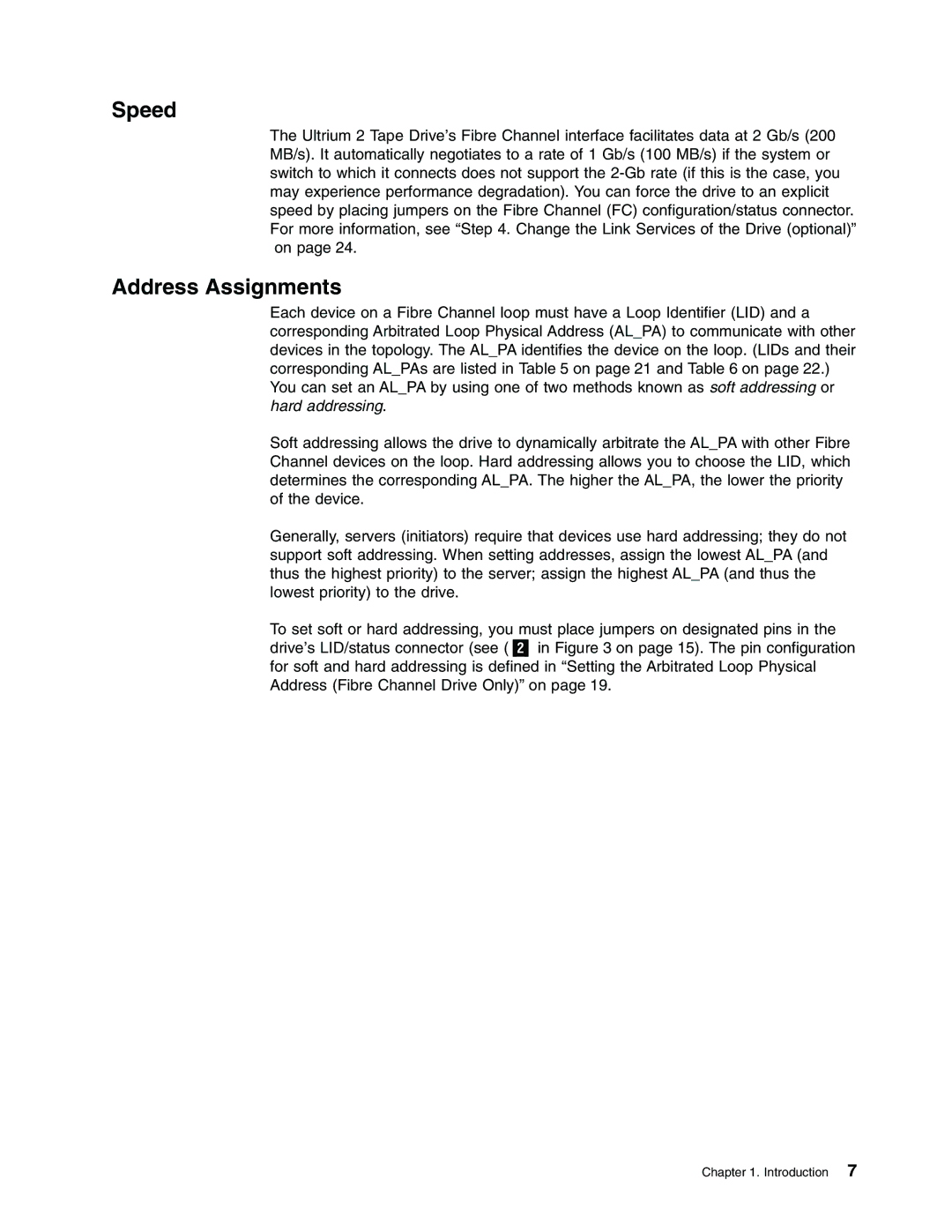Speed
The Ultrium 2 Tape Drive’s Fibre Channel interface facilitates data at 2 Gb/s (200 MB/s). It automatically negotiates to a rate of 1 Gb/s (100 MB/s) if the system or switch to which it connects does not support the
Address Assignments
Each device on a Fibre Channel loop must have a Loop Identifier (LID) and a corresponding Arbitrated Loop Physical Address (AL_PA) to communicate with other devices in the topology. The AL_PA identifies the device on the loop. (LIDs and their corresponding AL_PAs are listed in Table 5 on page 21 and Table 6 on page 22.) You can set an AL_PA by using one of two methods known as soft addressing or hard addressing.
Soft addressing allows the drive to dynamically arbitrate the AL_PA with other Fibre Channel devices on the loop. Hard addressing allows you to choose the LID, which determines the corresponding AL_PA. The higher the AL_PA, the lower the priority of the device.
Generally, servers (initiators) require that devices use hard addressing; they do not support soft addressing. When setting addresses, assign the lowest AL_PA (and thus the highest priority) to the server; assign the highest AL_PA (and thus the lowest priority) to the drive.
To set soft or hard addressing, you must place jumpers on designated pins in the drive’s LID/status connector (see ( in Figure 3 on page 15). The pin configuration for soft and hard addressing is defined in “Setting the Arbitrated Loop Physical Address (Fibre Channel Drive Only)” on page 19.
Chapter 1. Introduction 7
